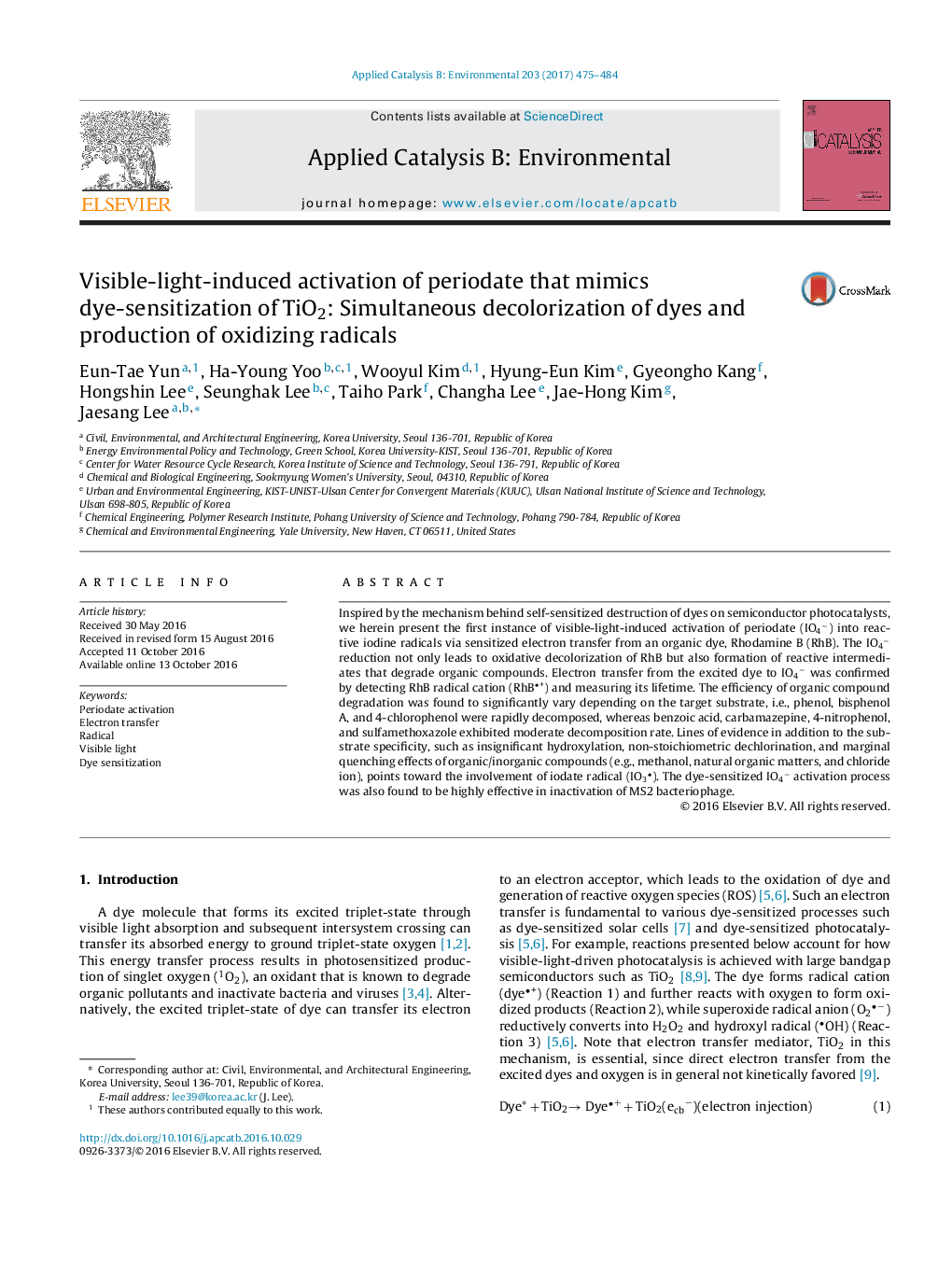| Article ID | Journal | Published Year | Pages | File Type |
|---|---|---|---|---|
| 6454502 | Applied Catalysis B: Environmental | 2017 | 10 Pages |
â¢Visible light induced activation of periodate is achieved with dye sensitizers.â¢The dye/periodate systems concomitantly decolorize dyes and degrade organics.â¢Iodate radical serves as a main oxidant in the photosensitization systems.â¢The inhibitory effects of various background constituents are insignificant.â¢The activated periodate enables extraordinarily rapid viral inactivation.
Inspired by the mechanism behind self-sensitized destruction of dyes on semiconductor photocatalysts, we herein present the first instance of visible-light-induced activation of periodate (IO4â) into reactive iodine radicals via sensitized electron transfer from an organic dye, Rhodamine B (RhB). The IO4â reduction not only leads to oxidative decolorization of RhB but also formation of reactive intermediates that degrade organic compounds. Electron transfer from the excited dye to IO4â was confirmed by detecting RhB radical cation (RhB+) and measuring its lifetime. The efficiency of organic compound degradation was found to significantly vary depending on the target substrate, i.e., phenol, bisphenol A, and 4-chlorophenol were rapidly decomposed, whereas benzoic acid, carbamazepine, 4-nitrophenol, and sulfamethoxazole exhibited moderate decomposition rate. Lines of evidence in addition to the substrate specificity, such as insignificant hydroxylation, non-stoichiometric dechlorination, and marginal quenching effects of organic/inorganic compounds (e.g., methanol, natural organic matters, and chloride ion), points toward the involvement of iodate radical (IO3). The dye-sensitized IO4â activation process was also found to be highly effective in inactivation of MS2 bacteriophage.
Graphical abstractDownload high-res image (153KB)Download full-size image
